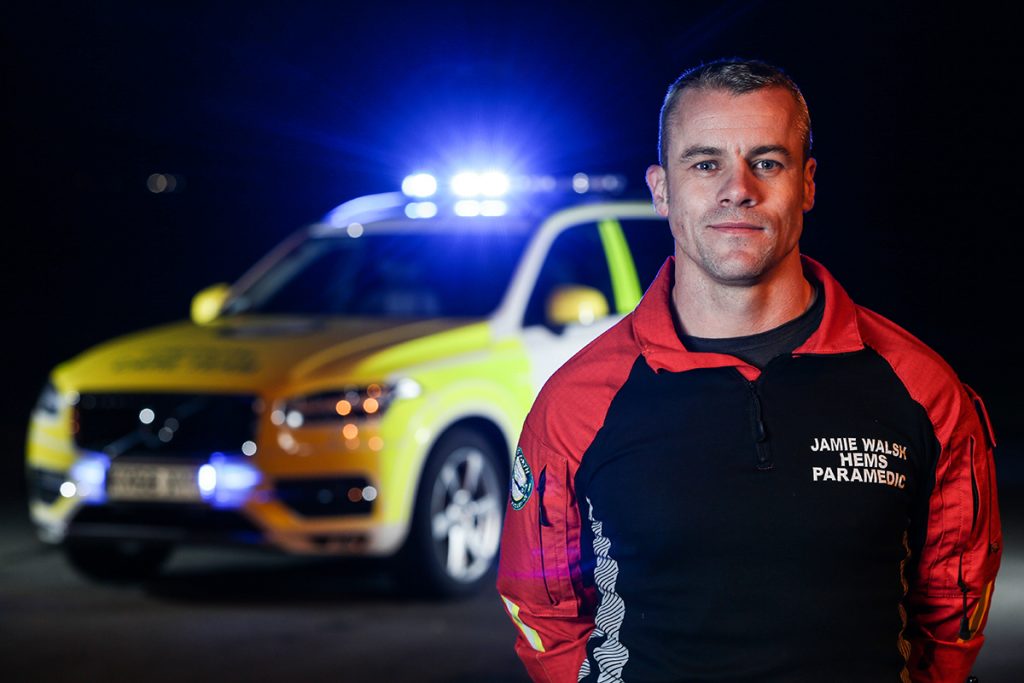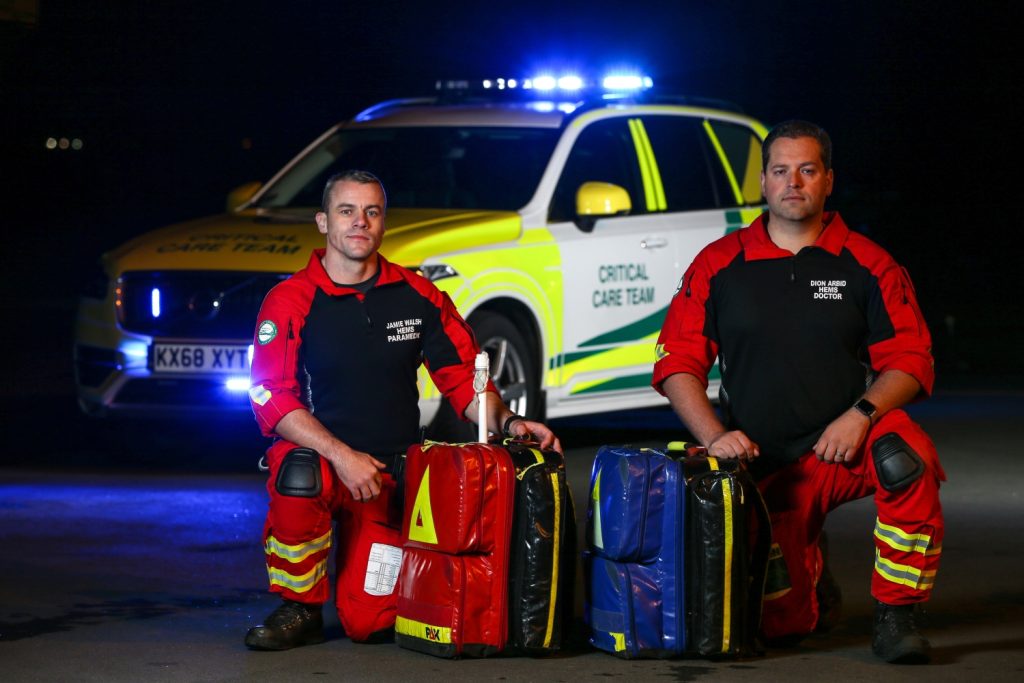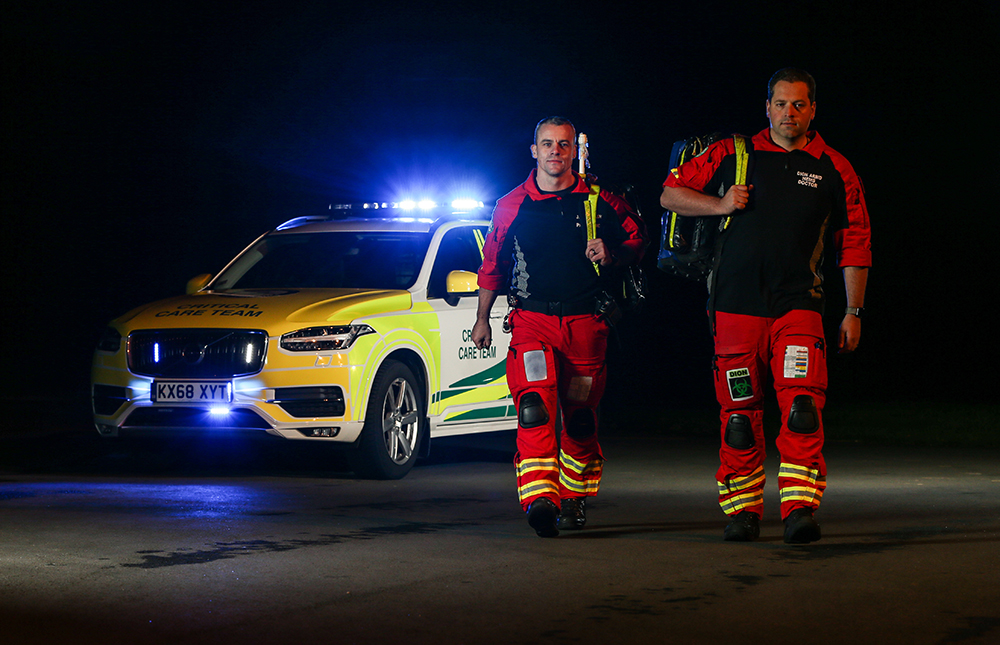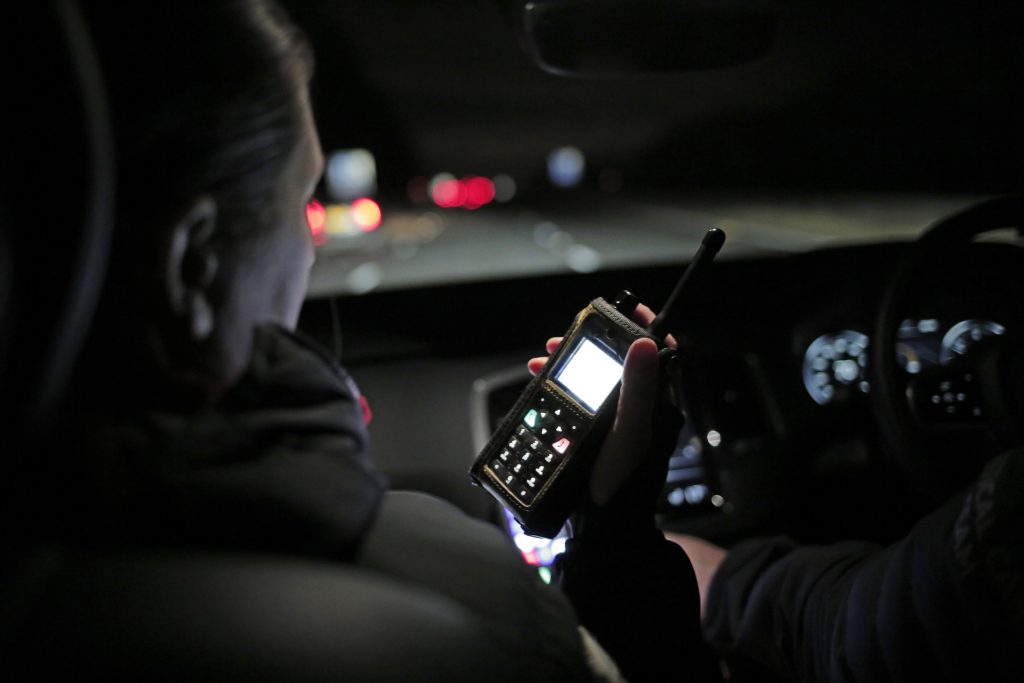Helicopters are the stars of our fleet. But, we couldn’t provide the life-saving care we do, without the help of our overnight cars.
But the way we carry out our work has changed dramatically over the past few years.
The helicopter is vital and will remain so. Throughout the day, it is the best way of flying our expert clinicians to the scene of the most seriously ill and injured patients in our region. It is often the best way of then transporting the patient on to hospital. But due to aviation rules, which are rightly in place to ensure the safety of passengers and crew, the work of air ambulances is much more limited in the hours of darkness.
By looking at hospital admissions data, we know the bulk of the patients overnight come from urban centres. And therefore we use a car, which can be deployed mainly in our towns and cities, utilising the same critical care team that is present on our aircraft with all the same essential equipment.


Due to efficient ‘tasking’ (the complex business of requesting our attendance at an incident), we are also having a significant impact in rural areas as well, where we see much fewer call-outs but where there is still a need for our services through the night.
In 2022, we attended 1732 incidents across our region showing a huge need for the service.
In this blog, we chatted with paramedic Jamie Walsh about how the service has evolved since it began and how it all works.
Here’s what he had to say:
Why does an air ambulance service need cars?
There are two main reasons:
- To allow our clinicians to respond if the aircraft are unable to fly due to breakdown or in extreme weather conditions.
- As part of our 24-hour response, the rapid response vehicles operate every night in the North East, and four nights in Cumbria.
What equipment do the cars carry?
We carry everything that you would find on our aircraft, which means the care the patient receives on scene is the same as would be the case if the helicopter had responded. The difference is that the cars cannot carry patients. However, taking our clinicians to the scene is proven to make a life-saving difference, and through working with our colleagues in the ambulance services, the patient can then be transported safely to hospital.


The care and medical interventions we provide through the night are still the same – it is just our mode of transport that changes. The key is to get the critical care team to the patient as safely and fast as we can.
When we are on shift, NEAS and NWAS provide us with a great support system and we always go in the land ambulance with the patient and get police or ambulance staff to drive our car to meet us at the hospital.
What is the criteria for us attending an incident through the night?
The criteria is very similar to that through the day on the aircraft but through the night the tasks come through from someone on the specialist dispatch desk at NEAS and NWAS rather than our own dispatcher here at GNAAS.
They radio through to us to let us know where we are going.
We do have immediate dispatch criteria that relate to certain traumatic injuries or patient conditions where we would not wait for an update and would attend immediately. We would always attend incidents like traumatic events, ineffective breathing, amputations, or anything that relates to our specific dispatch criteria.


Who drives the critical care cars and is it scary?
During the night, the critical care team is made up of a doctor and a paramedic crew.
The paramedic on shift will always drive as we have had blue light driver training from a specialist instructor which is refreshed every few years.
Driving at fast speeds can be scary so at the start of our shift I will always have a conversation with the doctor because being a passenger is different from driving and everyone needs to feel comfortable.
We have to both get to the job safely and in a calm manner and in the mind frame for making rational decisions.


Where is the team based when you are on night shift?
We are based in Washington fire station but we don’t really get much sleep.
It can be very tiring working through the night especially in bad weather and sometimes driving over 300 miles a night to get to jobs since our region is so vast.
Ready For Anything Raffle
Enter the Ready for Anything raffle and support your life-saving service
Enter now



